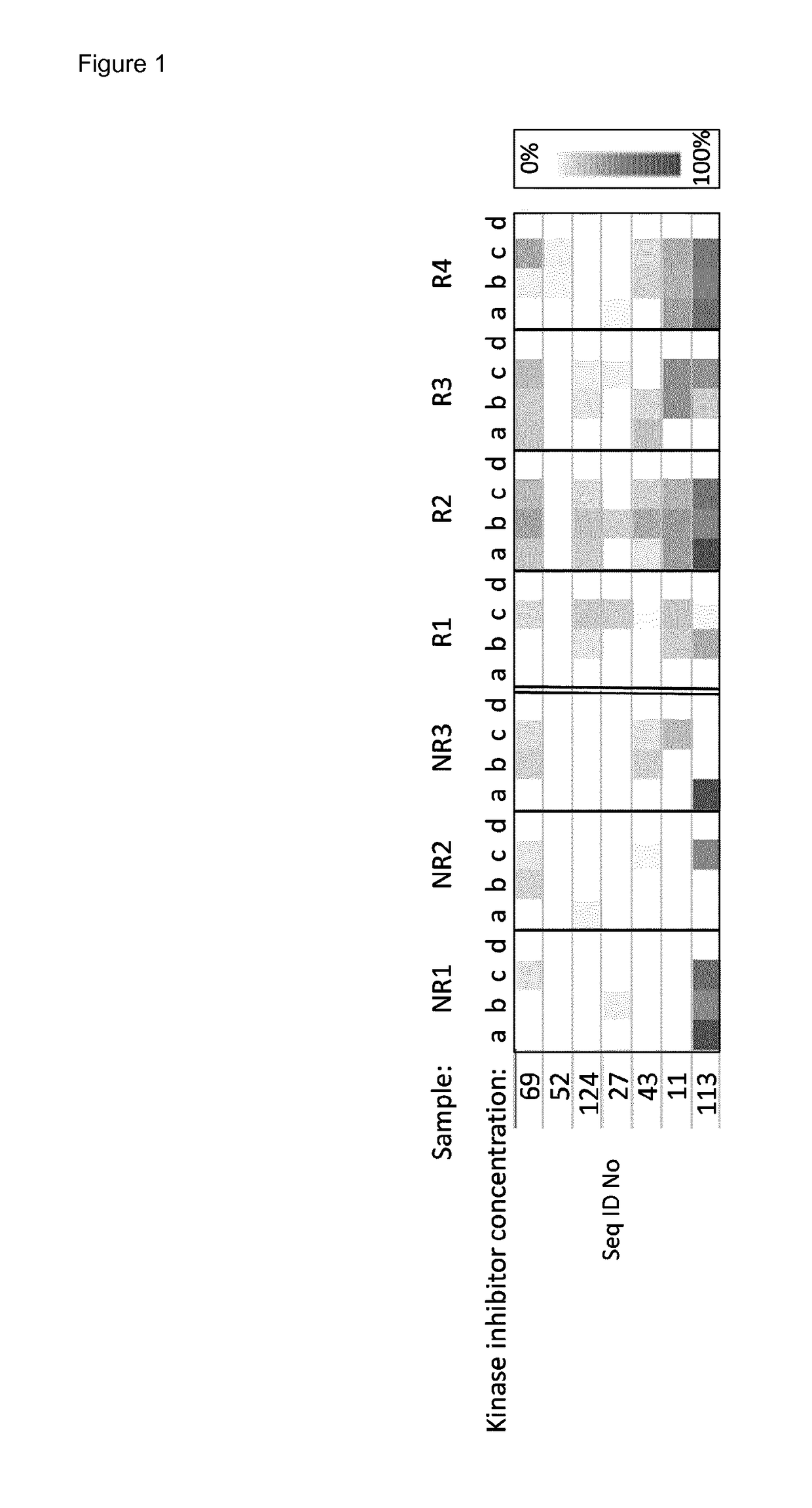Method for predicting the response of melanoma patients to targeted pharmacotherapy
a melanoma patient and targeted pharmacotherapy technology, applied in the direction of microbiological testing/measurement, measuring devices, instruments, etc., can solve the problems of poor prognosis of patients with disseminated disease, large majority of skin cancer deaths, and difficult treatment of more advanced melanomas
- Summary
- Abstract
- Description
- Claims
- Application Information
AI Technical Summary
Benefits of technology
Problems solved by technology
Method used
Image
Examples
example 1
howing how Responders and Non-Responders to Targeted Pharmacotherapy can be Differentiated According to a Phosphorylation Inhibition Profile
[0119]A clinical study was conducted using samples from melanoma patients which were not only mutated (BRAF mutation), but also treated with Vemurafenib. This allowed a comparison with the clinical responses.
[0120]In all the analyses, the first step is the lysis of the tumor tissue slices to extract the proteins. The kinase activity profiling was performed on a PamStation96 or a PamStation12 instrument that runs 96 (or 12) peptide microarrays. Each condition was run in multiple replicates. The small amount of material needed for one analysis (0.1 to 5 μg of total protein) allowed the additional testing of 4 concentrations of kinase inhibitors (concentration “a”=1 μM, “b”=10 μM, “c”=25 μM, “d”=0 μM). Besides the basal activity profiles, the same tumor samples were analysed in the presence and absence of the kinase inhibitor Dabrafenib. The degree...
PUM
| Property | Measurement | Unit |
|---|---|---|
| concentrations | aaaaa | aaaaa |
| concentration | aaaaa | aaaaa |
| colour | aaaaa | aaaaa |
Abstract
Description
Claims
Application Information
 Login to View More
Login to View More - R&D
- Intellectual Property
- Life Sciences
- Materials
- Tech Scout
- Unparalleled Data Quality
- Higher Quality Content
- 60% Fewer Hallucinations
Browse by: Latest US Patents, China's latest patents, Technical Efficacy Thesaurus, Application Domain, Technology Topic, Popular Technical Reports.
© 2025 PatSnap. All rights reserved.Legal|Privacy policy|Modern Slavery Act Transparency Statement|Sitemap|About US| Contact US: help@patsnap.com

